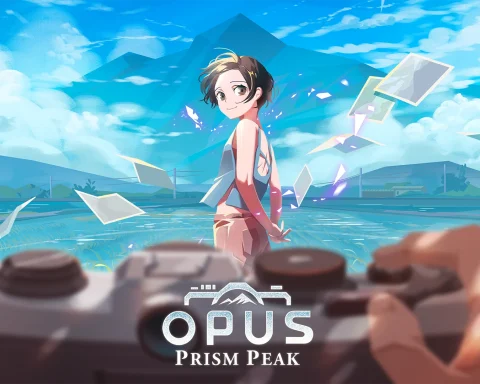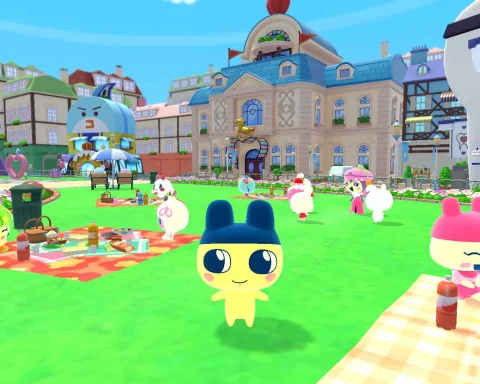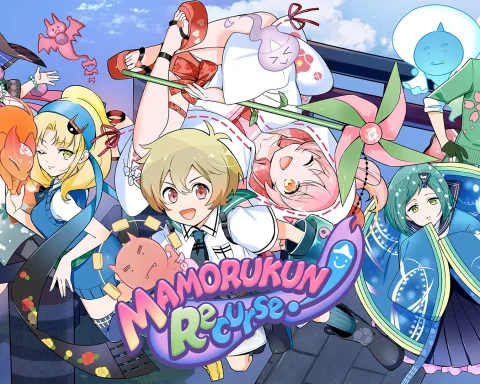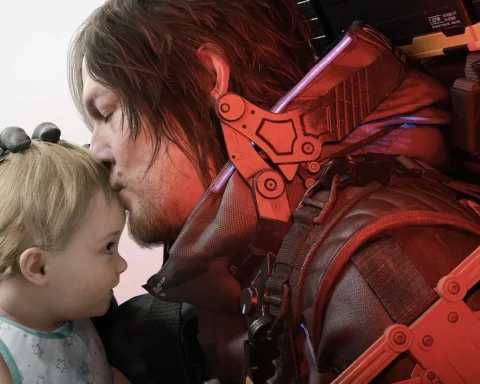Preview by Lindsay M.
It’s the misty morning of October 11, 1964. I’m in what is labelled as the Wellington Underground, but appears to be a bunker of sorts. There are construction chests scattered about; they each contain a handful of scrap parts. There’s a television set to a live broadcast, a medical kit containing what will surely be some useful goodies, and a metal bunk bed where I can sleep. One heavy door on the wall is locked, but I have access to the outside via a ladder and a hatch. Mrs. Stokes is hanging out in the back room. Quite literally. It appears as though she has committed suicide, and not exactly recently — she is starting to smell rather pungent. Welcome to We Happy Few.
I’ve heard many people compare the Xbox Game Preview version of We Happy Few to Bioshock. I am entirely unfamiliar to that series, so I cannot comment. But I am incredibly familiar with This War Of Mine, and the preview of We Happy Few reminds me very much of it, only with a rather bright dystopian art style to replace the grim hyper-real war setting. Granted, this build is nowhere near the entire game: the majority of the narrative elements have been removed, making the current build far more of an open-world survival game that a single-player story (but that’s not a bad thing). The preview build gives access to three of five islands, and considering I spent over one dozen hours quite happily wandering around just one of theses, just one the build does not lack of content.
So in the preview, who exactly is the one referred to as “I?” For that we jump to a time just prior to our underground party with Mrs. Stokes. The sign on the wall says that I am Arthur Hastings, Employee of the Year in the City of Wellington Wells’ Department of Archives, Recycling & Printing. I must be a goodie two-shoes. My job is to approve which newspaper articles will be archived and which will be destroyed. I like to think I’m getting the hang of it when a woman wearing a strange white mask waltzes in and demands I take my Joy – a drug that everyone in the community seems to be on. I am given two options, very Matrix-esque: take it or don’t. Of course, I have to take it — I’m employee of the year, I must do as I’m told and trust the system, right?
No, it turns out. Take the pill and you win. Take the pill and you’re brought to the credits. I don’t mean any disrespect to Compulsion Games, and I will happily take the time to watch the credits scroll… as long as I’ve played more than two minutes. This will not do. I return to the main menu, begin a new game, and become Arthur 2.0 who knows better than to take the Joy. But without it, the world begins to seem… bleak? Dreary? Mrs. Stokes-levels of depression sandwiched between grungy walls and abandoned offices? Don’t worry, there’s a part down the hall. Wait. Maybe it’s time to worry a bit, as I don’t think that’s a piñata they are bashing.
And then I am in the Underground. When I exit, it’s into a small garden. The small garden appears to be the same each time but its location on the map changes. We Happy Few is procedurally generated, an incredibly fun/smart-sounding way to say it’s different each time you start a new game. The game functions the same — and many of the characters will be the same — but the map layout will be different, as will be what spawns upon it. Some secondary quests will be available while others are left out, but primary quests remain the same. The first big task was to get over a bridge, but instead I (as previously stated) spent over a dozen hours just wandering about before feeling the need to venture farther. This proves the scale of the game is serious despite the fact “three islands” sounds quite small. Each island is a randomly generated plot of land that contains streets, parks, and homes.
The map is created as you explore, so doing so is key to discovering everything there is to find. Stumbling upon side quests is a particular delight at this stage, as it allows me to interact with a variety of — ahem — interesting folk. There is one man named Crazy Legs who you need to somehow catch and incapacitate; and trust me, he isn’t named Crazy Legs for nothing. For some quests items need to be crafted. Mirroring the real world, duct tape is used in just about everything; unlike in the real world, it’s not that easy to come by. While completing one side quest, I was caught in a trap and ended up being beaten by a gang of happy-faced hooligans, and in that moment I learned not to trust the quests. Or Joy: never trust Joy. Sure, everything looks shiny and happy… but then you crash down back to the dirty streets and seemingly insane street wanderers.
Crafting is an integral part of the game. Collecting berries and petals mean you can make healing balms for times you get into scuffles, while a water pump can complete a quest, and so forth. And with crafting comes scavenging, something that I adore. I can search in mailboxes, debris piles, and bushes I find in the open. If nobody is home or if I’m feeling risky (that never happens, Arthur seems like a very conscientious man) I can enter a home and search their dressers and stoves for items of use. Some homes are filled to the brim with duct tape, metal bits, and other goodies. Other homes are sparse and I’m lucky to find one tiny dresser in a near-impossible to find second-floor hideaway.
I truly enjoyed every moment of We Happy Few I played, and I intend on racking up dozens more hours before the official release that is expected in six months to one year. However, being a game in preview means that there are some finicky issues that make me scratch my head and wonder why. Despite there being a large emphasis placed on being tucked in bed at night, there is no easy way to tell time. I’ve taken to reading the sun, which is quite funny but not exactly useful. Inventory control is difficult and in dire need of an auto-sort or sort-by feature. And the load times seem downright unacceptable, taking several minutes to boot a saved game.
While the preview build lacks narrative, that isn’t the equivalent of a lack of depth. We Happy Few allows you to either act brashly and hurt others, or stay calm and only take what isn’t claimed. You can kill people, but you are also offered the choice to simply incapacitate them if conflict is unavoidable. Sometimes you need to take someone out to survive, for instance, when you are absolutely desperate for something they have. It is in these ways that We Happy Few reminds me of This War of Mine: the moral choices you make can lay heavy on your mind past the point of putting down the controller.
Related reading: Catch up with Compulsion Games by playing Contrast. Matt’s full review here.
I sometimes find myself judging those on Joy. Arthur Hastings, Employee of the Year in the City of Wellington Wells’ Department of Archives, Recycling & Printing, is better than them. Arthur Hastings doesn’t need Joy, Arthur Hastings is out for the truth. And all of a sudden the world seems so black-and-white despite that being the very thing I was trying to avoid to begin with. Arthur Hastings mustn’t be so hasty to judge: sometimes it is easier to hide reality than it is to face it.
– Lindsay M.
News Editor









